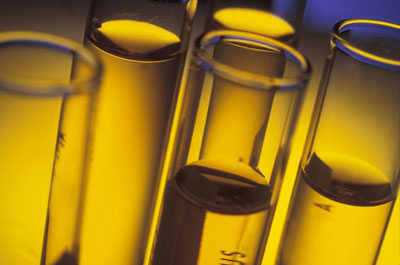
Wired reports:
A 16-year-old high school student has invented a new way of producing electricity by harnessing the brawny power of bacteria.
Kartik Madiraju, an 11th-grader from Montreal, was able to generate about half the voltage of a normal AA battery with a fifth of an ounce of naturally occurring magnetic bacteria. And the bacteria kept pumping current for 48 hours nonstop.
"No one has ever used magnetic bacteria to produce an electrical current before," Madiraju said.
The experiment is being presented this week at the Intel International Science and Engineering Fair, an über-science geek competition in which the chipmaker annually hands out $4 million in prize money to students. Winners will be announced Friday.
Magnetotactic or magnetic bacteria have extremely small crystals of magnetite inside their bodies. Only discovered in 1975, these aquatic bacteria are quite common and found in fresh water and saltwater around the world.
A bit of a science whiz kid, Madiraju was browsing through the science journal Nature and happened to see something about magnetic bacteria while trying to think of a project to benefit the environment. "I knew that spinning windmills use a magnetic generator to produce electricity and wondered if I got the magnetic bacteria spinning they might generate a current and be a clean, alternative energy source," he said.
Madiraju put the free-floating bacteria, which are essentially tiny magnets, into plastic boxes less than a fifth of a cubic inch. Metal strips on two sides act as electrodes and get them spinning, generating a magnetic field and an electric current. Current and power were sustained at 25 microamps and 5.5 microwatts, respectively, beyond 48 hours at a resistance of 10 kohms.
"I thought the idea was outlandish originally and was one of the most surprised when it worked the very first time," said John Sheppard, a professor in the Department of Bioresource Engineering at Montreal's McGill University.
"I'm optimistic about the practical applications; he's developed the technology quite a bit just working on weekends," said Sheppard.
Madiraju envisions clean-running underwater power plants in the developing world. "The latter is long-term of course, but not too far-fetched," he said.
Micro-energy sources in nanotechnology or biosensors would be easier to do and are more likely uses, said Sheppard, who was Madiraju's mentor under the strict conditions of two big science contests, the Intel competition and Canada's Sanofi-Aventis Biotech Challenge. Madiraju has won in various categories previously and on May 10, his magnetic bacteria battery demonstration placed third in the Canadian competition.
------------

No comments:
Post a Comment